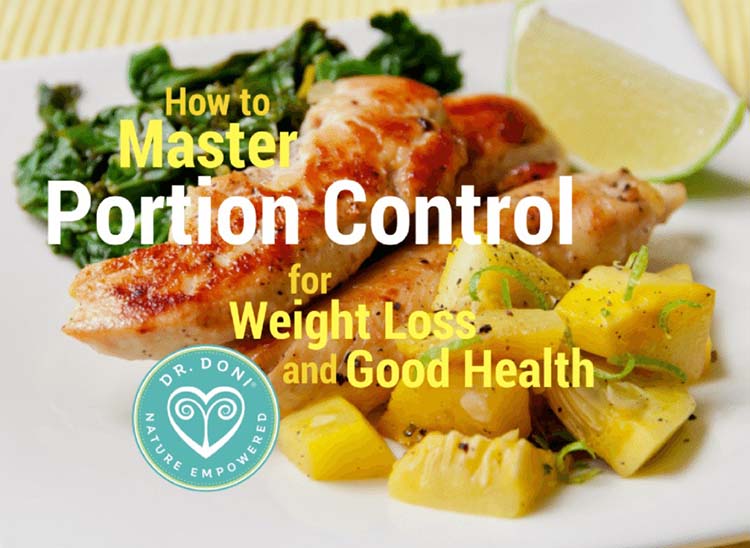When it comes to achieving and maintaining a healthy weight, there is no denying the impact that portion control can have. The size of our food portions plays a crucial role in calorie intake, which directly influences our weight. In this blog post, we will explore the importance of portion control in weight management and provide practical strategies for successfully implementing portion control into our daily lives.
I. The Role of Portion Sizes in Calorie Intake:
- Caloric Balance: Portion control helps in achieving a balance between the calories we consume and the calories we burn through physical activity. Consuming larger portion sizes than necessary can lead to excess calorie intake and weight gain over time.
- Distorted Perception: Many of us have become accustomed to larger portion sizes due to food industry marketing and availability. This has led to a distorted perception of what constitutes a normal serving size.
- Mindless Eating: Oversized portions can contribute to mindless eating, where we consume more food simply because it is in front of us. This can lead to overeating and difficulty in maintaining a healthy weight.
II. Benefits of Portion Control:
- Weight Management: Portion control is a fundamental aspect of weight management, as it allows us to control calorie intake and create an energy deficit necessary for weight loss or maintenance.
- Improved Nutrition: By controlling portion sizes, we can ensure that we are consuming a variety of foods from different food groups, thereby promoting a well-rounded, nutrient-rich diet.
- Better Digestion: Overeating can strain our digestive system, leading to discomfort and digestive issues. Portion control allows for better digestion and efficient nutrient absorption.
- Sustainable Eating Habits: Practicing portion control fosters mindful eating habits and helps establish a balanced relationship with food based on moderation and nourishment.
III. Strategies for Successful Portion Control:
- Understanding Serving Sizes: Familiarize yourself with standard serving sizes by referring to food labels, online resources, or using visual cues like using your palm size as a reference for protein portions.
- Use Smaller Plates and Bowls: By using smaller dishware, we can trick our minds into perceiving larger portion sizes while consuming fewer calories.
- Measure and Weigh Ingredients: Utilize measuring cups, spoons, and food scales to accurately measure ingredients while cooking or preparing meals. This ensures portion sizes are controlled and consistent.
- Pre-Portion Snacks and Meals: Pre-portioning meals and snacks in advance helps to limit portion sizes and provides ready-to-go options that make it easier to practice portion control on busy days.
- Fill Half Your Plate with Vegetables: Vegetables are low in calories and high in nutrients and fiber. By filling half your plate with vegetables, you can naturally reduce the portion size of higher-calorie foods.
- Slow Down and Savor: Eating mindfully, chewing slowly, and savoring each bite allows us to appreciate the flavors and textures of our food. This helps us recognize when we are satisfied and prevents overeating.
- Be Mindful of Liquid Calories: Be aware that beverages, such as sugary sodas, juices, and alcoholic drinks, can contribute to excess calorie intake. Control portion sizes by choosing smaller cups or diluting sugary drinks with water.
- Practice Moderation, Not Deprivation: Portion control does not mean depriving yourself of your favorite foods. Instead, enjoy them in moderation and be mindful of portion sizes.
IV. Overcoming Common Challenges:
- Social Situations: Be mindful of portion sizes when dining out or attending social events. Share meals, ask for smaller portions, or take home leftovers to avoid overeating.
- Emotional Eating: Emotional eating often leads to overconsumption. Instead, find alternative coping mechanisms like engaging in physical activity, practicing relaxation techniques, or seeking support from a therapist or support group.
- Mindless Snacking: Avoid mindless snacking by portioning snacks into individual servings and keeping them in separate containers or bags. Engage in intentional snacking, focusing on nutrient-dense options.
Conclusion:
Portion control is a valuable tool for weight management and overall health. By understanding the impact of portion sizes on calorie intake and adopting practical strategies, we can successfully implement portion control into our daily lives. From using smaller plates to being mindful of liquid calories, every small step counts in maintaining a healthy weight and promoting a balanced relationship with food. Remember, portion control is about moderation, not deprivation, and it plays a vital role in achieving and sustaining long-term weight management goals.

